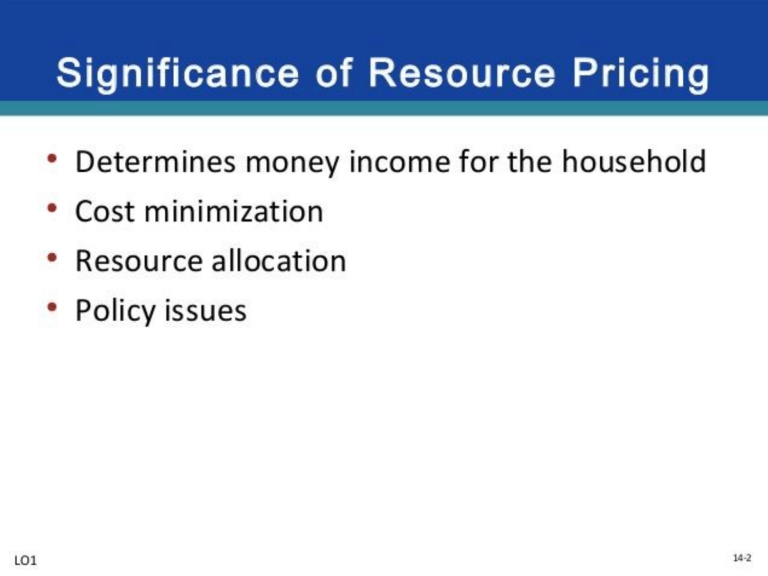
13 Wage Determination McGraw-Hill/Irwin Copyright © 2012 by The McGraw-Hill Companies, Inc. All rights reserved. • Why do professional athletes and rock stars earn tens of millions of dollars every year, while teachers and nurses with more education earn significantly less? • To determine wages, we must examine the supply of labor, as well as demand. Wage levels have broad implications for the profitability of firms as well as the ability of workers to buy products. • An investment in human capital is an expenditure on education or training that improves the skills and productivity of the worker. • In a purely competitive labor market, a large number of firms demand labor, while a large number of workers with identical skills supply labor, so neither side controls the market. • Firms must raise wages in order to attract more workers away from other opportunities. • The marginal resource cost is the additional cost incurred by hiring an additional worker. • 5 workers make $10 per hour. To attract a 6th worker the wage rate increases to $12 for all employees. • The marginal labor costs is $22 • 5 workers = $50 • 6 workers = $72 • A monopsony occurs when a firm is the sole employer in an area labor is immobile. • The monopsony model looks like a flippedover monopoly product model. The firm must raise the wage of all workers in order to attract each new worker to the industry. • Labor unions also have an effect on wages. They seek policies to increase product demand (and, therefore, the demand for labor), reduce the supply of labor (through licensing or other requirements), or bargain collectively in an attempt to create a wage floor. • When a union bargains with a monopsonist it may increase employment to the point that supply meets demand. • By raising the cost of entering an occupation, licensure has the effect of restricting the supply of labor to a market, driving up the wage rate. • Differences in wages can be explained by differences in marginal revenue productivity, ability, education and training, and other factors such as the danger involved in the job and differences in the cost of living in specific areas of the country. • A minimum wage set above the equilibrium wage creates a price floor, where the quantity of labor demanded is less than the quantity supplied, possibly resulting in unemployment. • By standardizing the wage for all low-wage workers, the minimum wage may actually reduce the marginal cost of labor, thereby increasing employment. • When the principle-agent problem related to the employer-employee relationship arises when the agenda of the employer differs from that of the worker. The firm has one goal while the employee has another.


